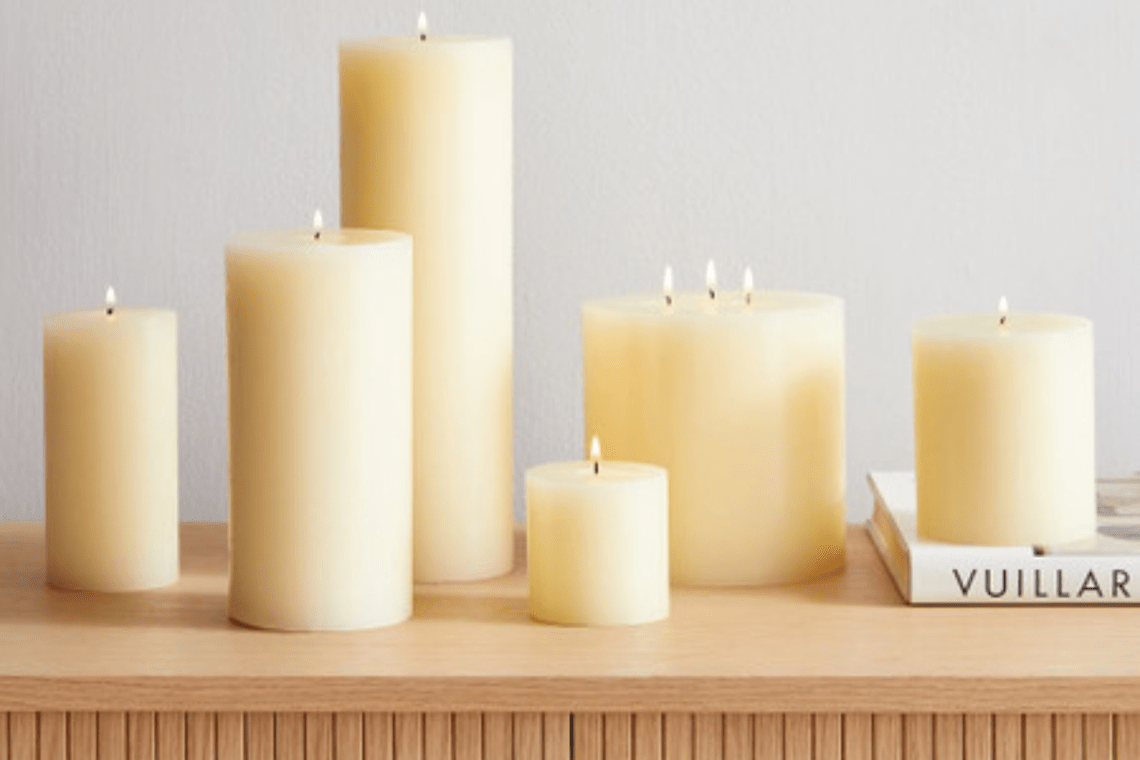
A Comprehensive Guide To Candle Wax: Made simple in a Chart
Whether you’re a seasoned candle maker or just starting out, understanding the different aspects of candle wax is important for creating beautiful and fragrant candles.
In this guide, I’ve put together a really simple chart to follow that details the types of commonly used candle waxes and important factors for each type. Feel free to use this cheat sheet depending on the project you had in mind!
I’ll delve into key factors that influence candle making, including mixing colors, melting points, hot and cold fragrance throws, and the suitability of various wax types for jar and pillar candles. By exploring these aspects, you’ll gain valuable insights into the characteristics and properties of different waxes, enabling you to make informed decisions and create candles that meet your desired aesthetic and olfactory preferences. So, let’s dive in
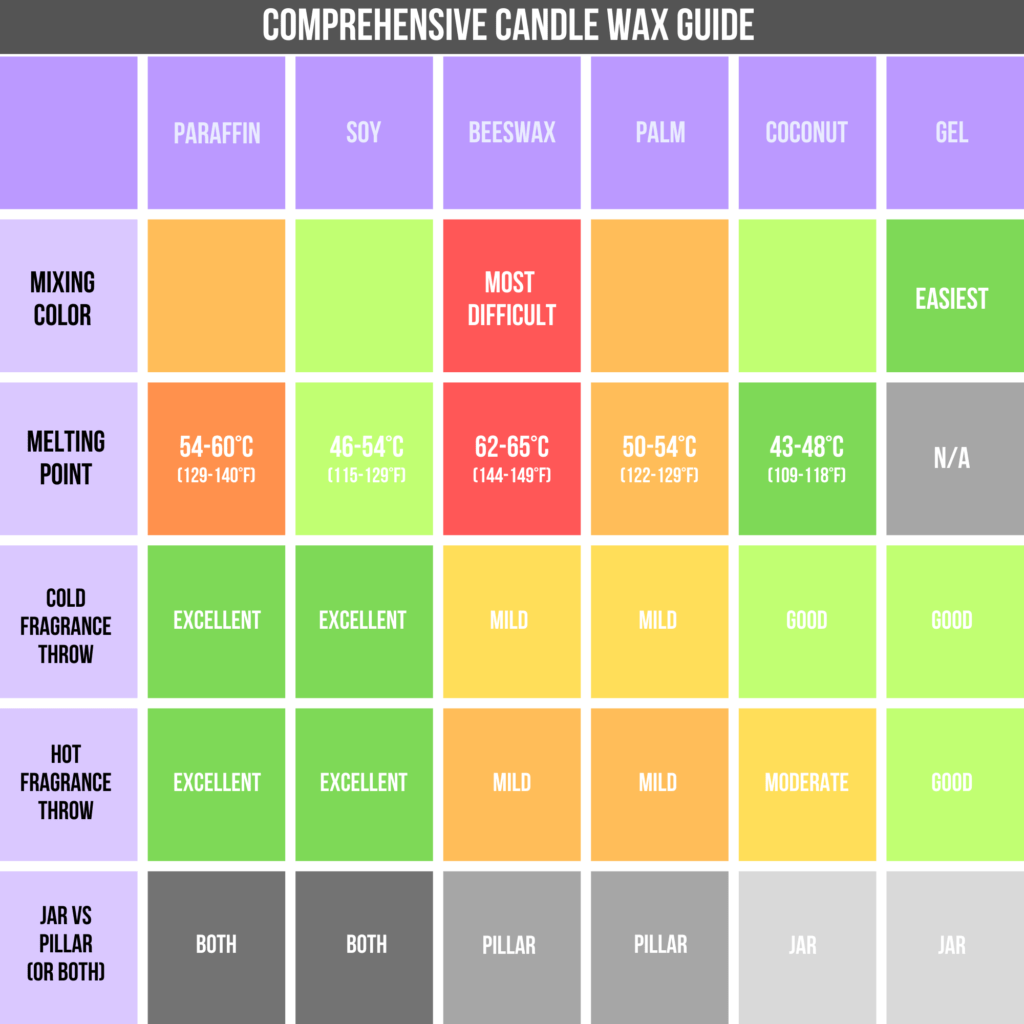
If you’re looking for additional info on Candle wax types, pros and cons, and tips on selecting and when best to use each one, check out my other comprehensive guide!
Mixing with Colorants
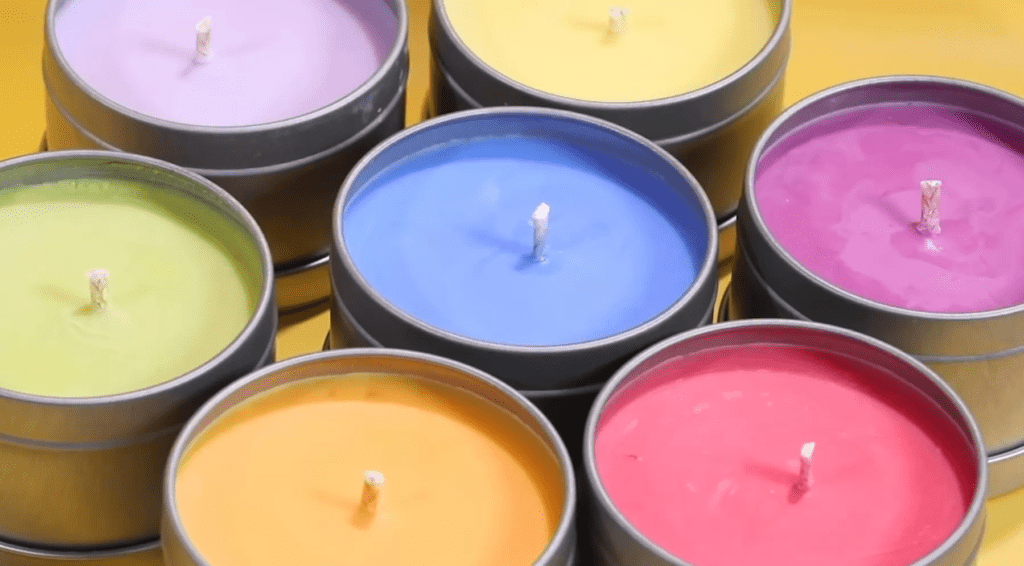
Explanation of the rating scale:
Gel Wax: Gel wax is the easiest to mix color with due to its transparent nature and ability to suspend colorants effectively. It allows for vibrant and clear color results, making it ideal for creating visually appealing gel candles.
Coconut Wax, Soy Wax: Both coconut wax and soy wax have a relatively high compatibility with colorants. They can easily incorporate and disperse color, resulting in consistent and vibrant hues in the candles.
Paraffin Wax, Palm Wax: Paraffin wax and palm wax require a bit more effort to achieve desired color intensity. While they can still blend with colorants, additional mixing and careful temperature control may be needed to achieve the desired color results.
Beeswax: Beeswax tends to be the most challenging wax to mix color with. It has a natural yellowish hue, which can impact the final color outcome. Achieving intense or vibrant colors may require higher concentrations of colorants and careful experimentation.
It’s important to note that individual experiences with different waxes may vary, and factors such as the quality of colorants used and personal techniques can influence the ease of color mixing.
Melting Points
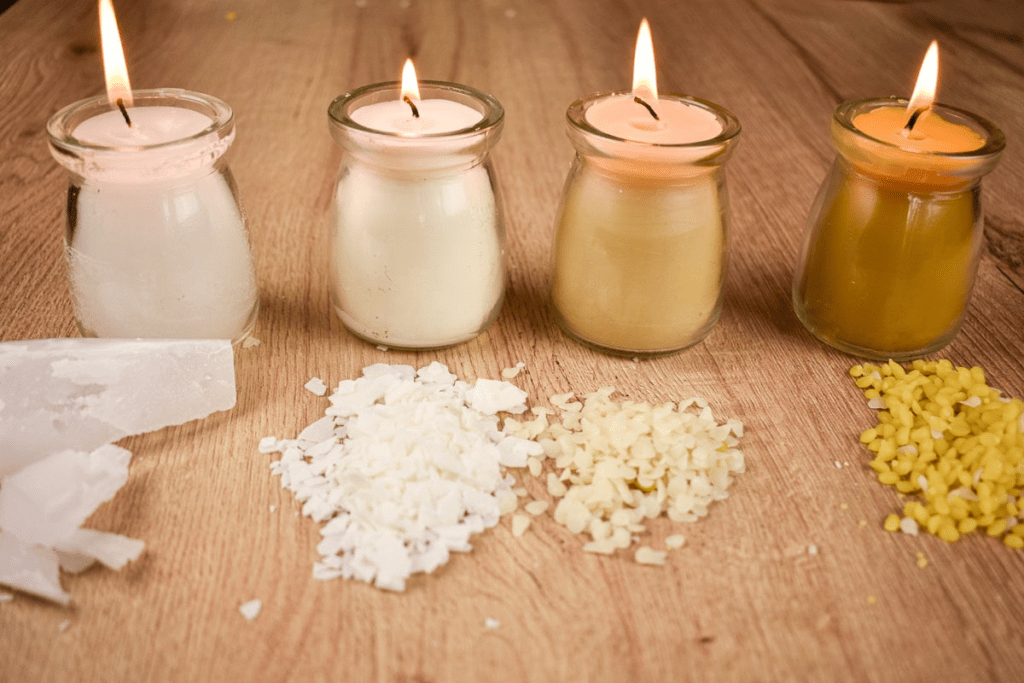
Here is the ranking of candle waxes based on their melting points, from highest to lowest, along with the corresponding melting temperatures in Celsius and Fahrenheit:
Gel Wax Melting Point: N/A (Gel wax does not have a defined melting point as it is a blend of mineral oil and polymer.)
Beeswax Melting Point: Approximately 62-65°C (144-149°F)
Paraffin Wax Melting Point: Approximately 54-60°C (129-140°F)
Palm Wax Melting Point: Approximately 50-54°C (122-129°F)
Soy Wax Melting Point: Approximately 46-54°C (115-129°F)
Coconut Wax Melting Point: Approximately 43-48°C (109-118°F)
It’s important to note that melting points can vary depending on the specific formulation and quality of the wax. These temperature ranges provide a general idea of the melting characteristics of each wax type, but it’s always recommended to refer to the manufacturer’s instructions for precise melting and pouring guidelines.
Cold Fragrance Throw
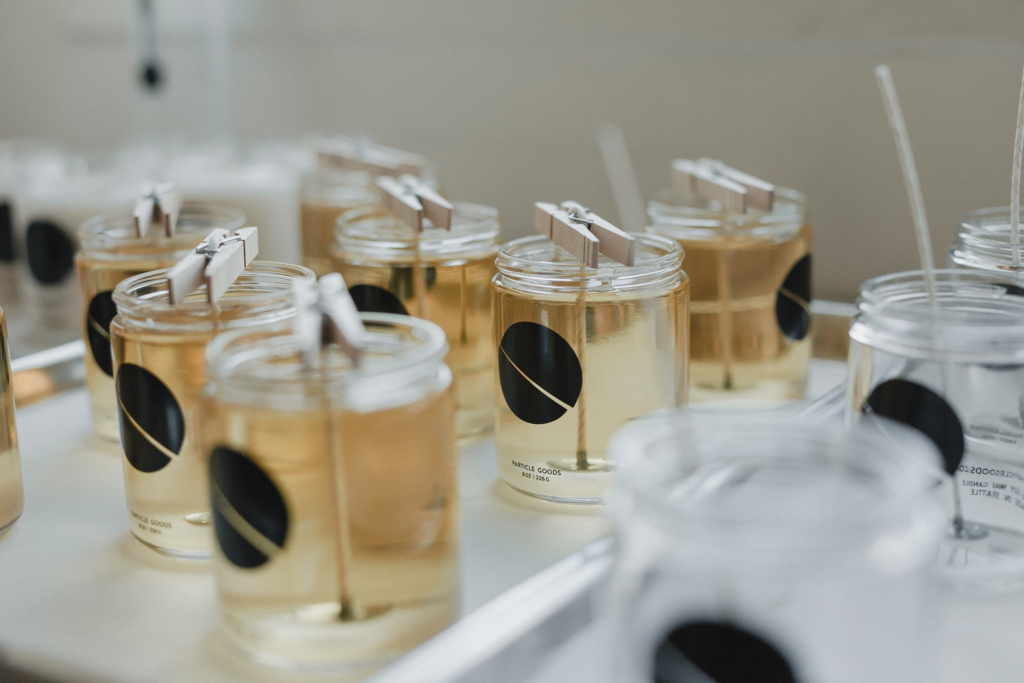
Explanation of the rating scale:
Paraffin Wax, Soy Wax: Both paraffin wax and soy wax are known for their excellent cold fragrance throw. They have the ability to release strong scents even when the candle is unlit, filling the surrounding area with a pleasant aroma.
Coconut Wax, Gel Wax: Coconut wax and gel wax also have good cold fragrance throw capabilities. They can retain and emit fragrance effectively, although they may not be as strong as paraffin wax or soy wax.
Beeswax, Palm Wax: Beeswax and palm wax generally have a milder cold fragrance throw compared to other waxes. While they can still release a pleasant scent, the fragrance may not be as strong or noticeable in the surrounding area when the candle is unlit.
It’s important to note that the fragrance throw can be influenced by various factors, including the quality and concentration of fragrance oils used, the specific formulation of the wax, and the size and design of the candle. Individual experiences with different waxes may vary, and experimentation with different wax types and fragrance combinations is recommended to achieve the desired fragrance throw.
Hot Fragrance Throw

Explanation of the rating scale:
Paraffin Wax, Soy Wax: Paraffin wax and soy wax are known for their excellent hot fragrance throw. When these waxes are melted and the candle is lit, they release fragrance effectively, filling the room with a strong and noticeable aroma.
Gel Wax: Gel wax has a good hot fragrance throw, allowing it to release fragrance effectively when the candle is lit. The transparent nature of gel wax also enhances the visual experience of the candle.
Coconut Wax: Coconut wax has a moderate hot fragrance throw. While it may not be as strong as paraffin wax or soy wax, it can still emit a pleasant scent when the candle is burning.
Beeswax, Palm Wax: Beeswax and palm wax generally have a milder hot fragrance throw compared to other waxes. They can still release fragrance, but the scent may be more subtle and may not fill the room as strongly as paraffin wax or soy wax.
It’s important to note that the hot fragrance throw can be influenced by factors such as the quality and concentration of fragrance oils used, the specific formulation of the wax, and the size and design of the candle. Additionally, proper wick selection and burning techniques also play a role in maximizing the fragrance throw of a candle. Individual experiences with different waxes may vary, and experimentation with different wax types and fragrance combinations is recommended to achieve the desired hot fragrance throw.
Pillar / Stand-alone Vs Jar (or both)
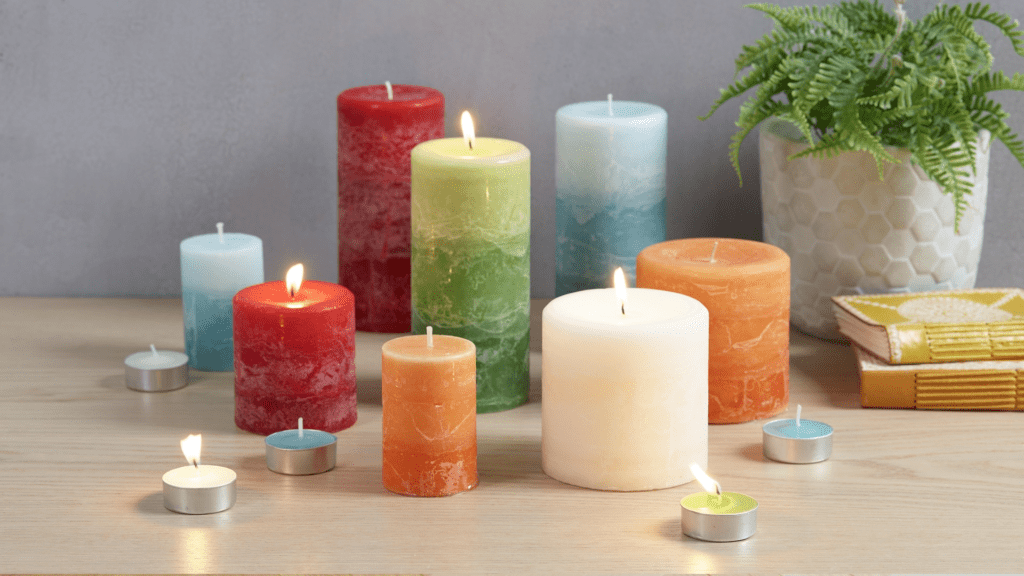
Explanation of the rating:
Paraffin Wax: Paraffin wax is versatile and suitable for both pillar and jar candles. It can be molded into various shapes for pillar candles or poured into jars.
Soy Wax: Soy wax is also versatile and suitable for both pillar and jar candles. It can be used for creating molded pillars or poured into jars for container candles.
Beeswax: Beeswax is primarily preferred for pillar and stand-alone candles. Its firm and durable nature allows it to hold its shape well without the need for a container.
Palm Wax: Palm wax is also commonly used for pillar and stand-alone candles. It has a natural ability to create unique textures and patterns, making it ideal for showcasing in pillar candles.
Coconut Wax: Coconut wax is often preferred for jar candles. Its creamy texture and excellent scent throw make it suitable for container candles.
Gel Wax: Gel wax is typically used for jar candles. Its transparent and gel-like consistency allows for creative designs and embedding objects within the candle.
While these ratings provide a general overview, it’s important to consider other factors such as the specific formulation of the wax, the size and design of the candle, and personal preferences when choosing the right wax for your specific candle-making project.
If you’re looking for a reputable company to buy quality candle wax, check out Nature’s Garden Candle Co.

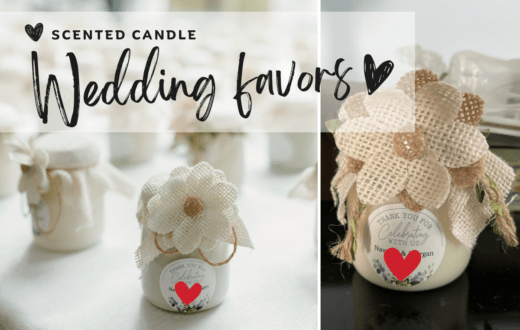

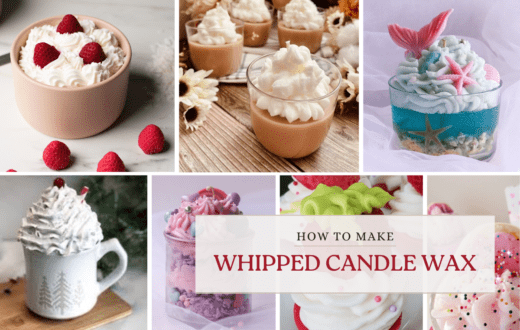
2 Comments
wax and scents
Superb blog! Do you have any tips for aspiring writers?
I’m planning to start my own website soon but I’m a little lost on everything.
Would you suggest starting with a free platform like WordPress or go
for a paid option? There are so many choices out there that I’m completely overwhelmed ..
Any ideas? Thanks a lot!
Cristina
Hi there! I’d recommend a free WordPress site and just choose a template that you love 🙂